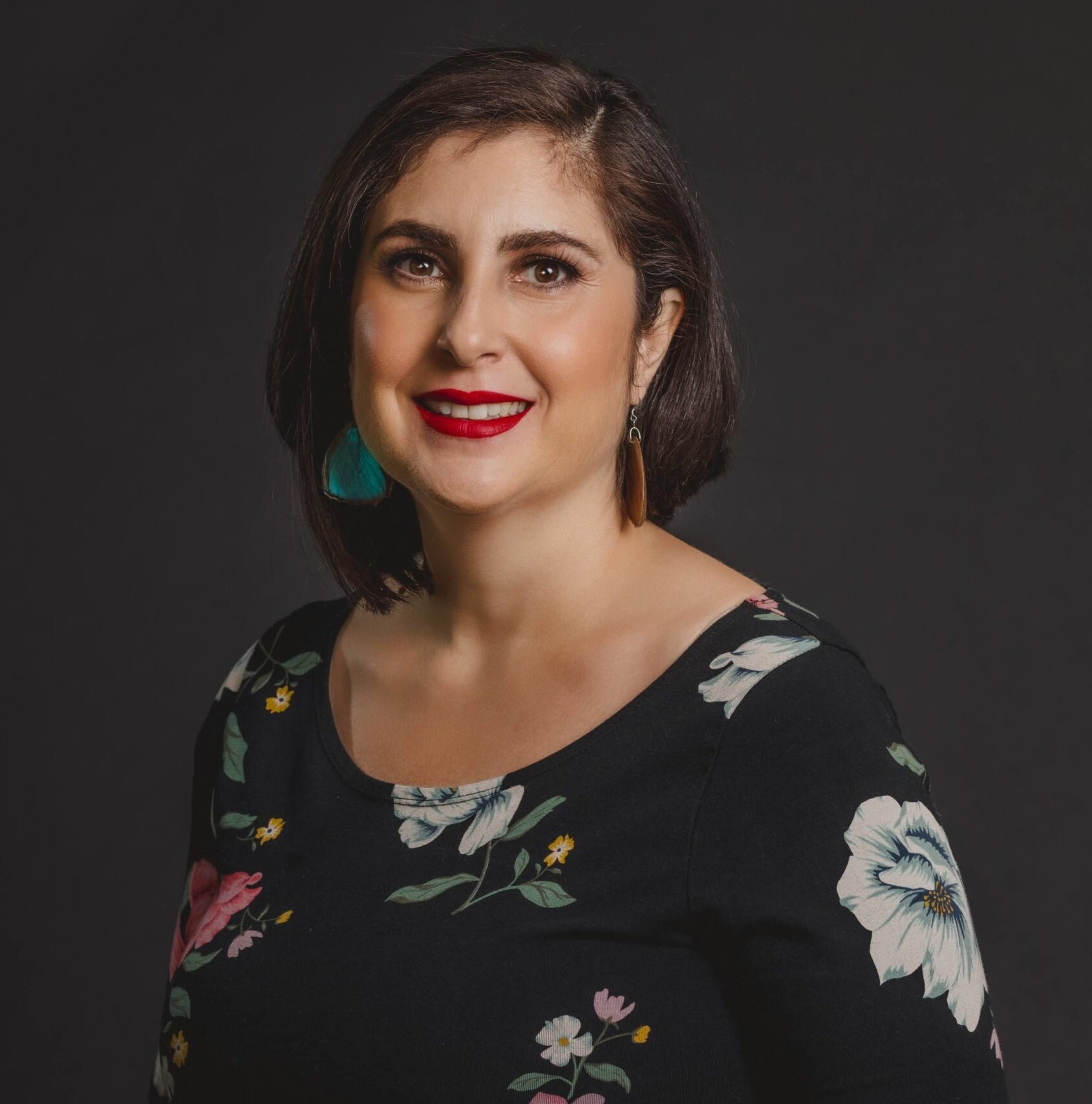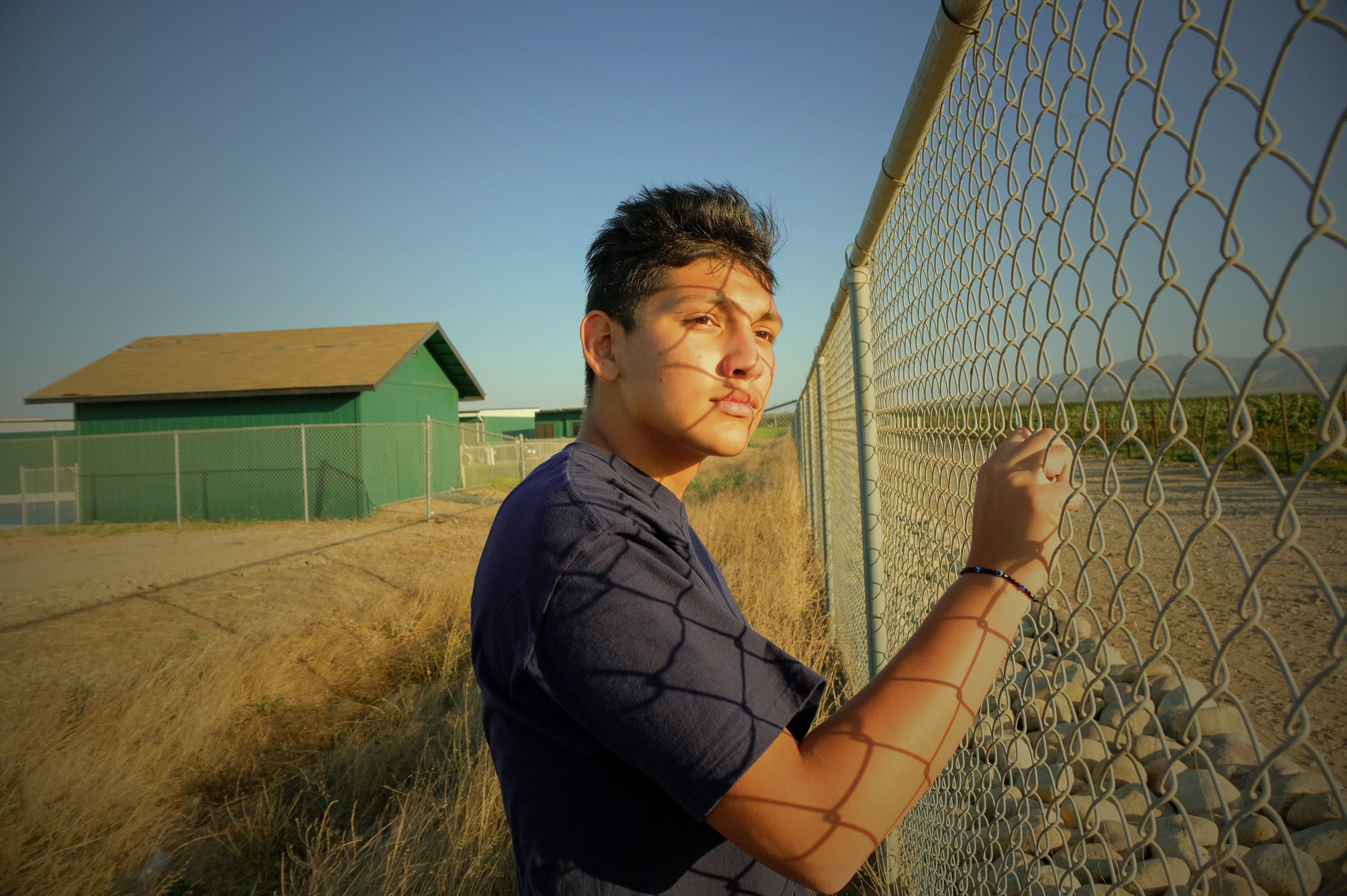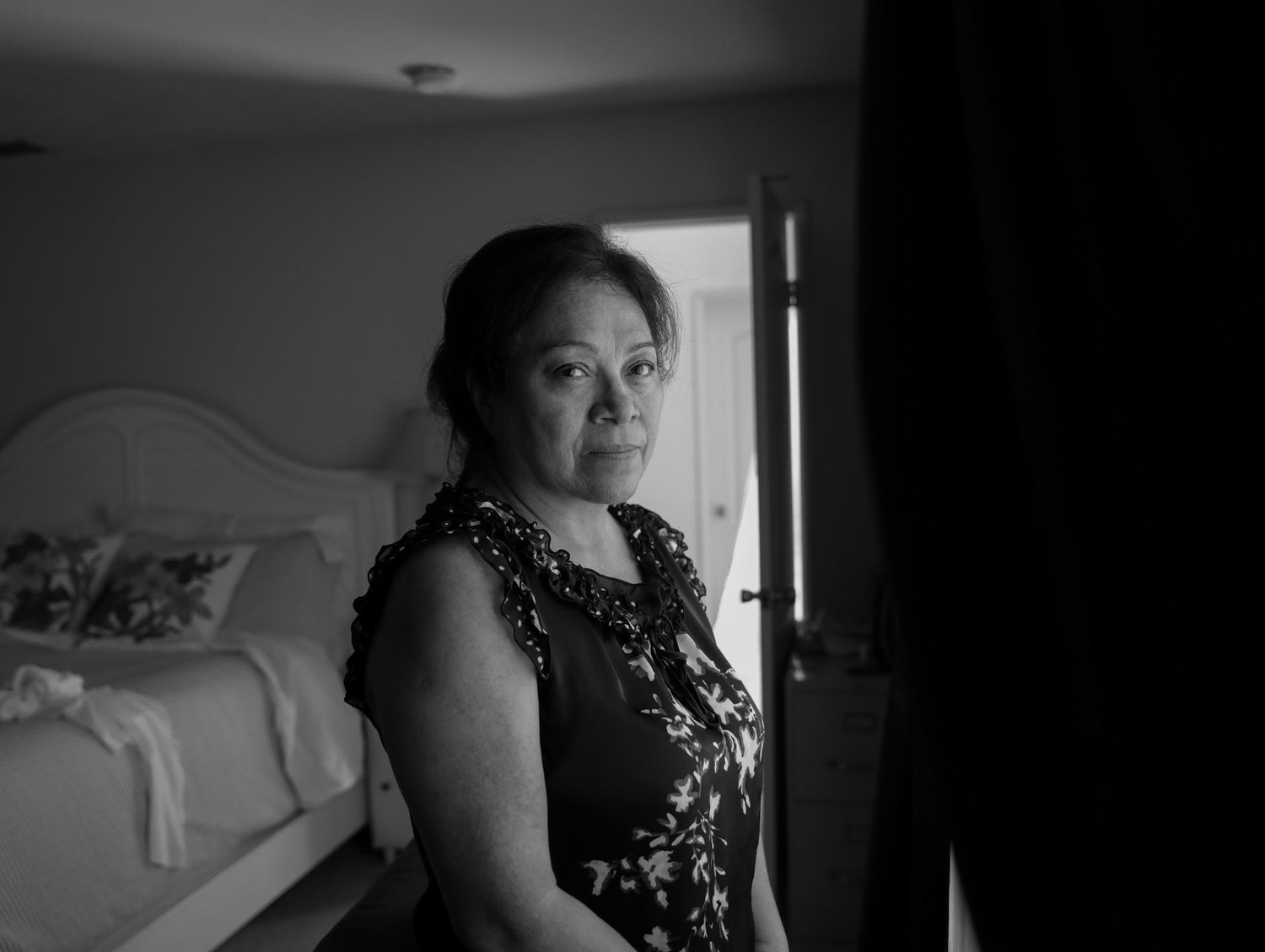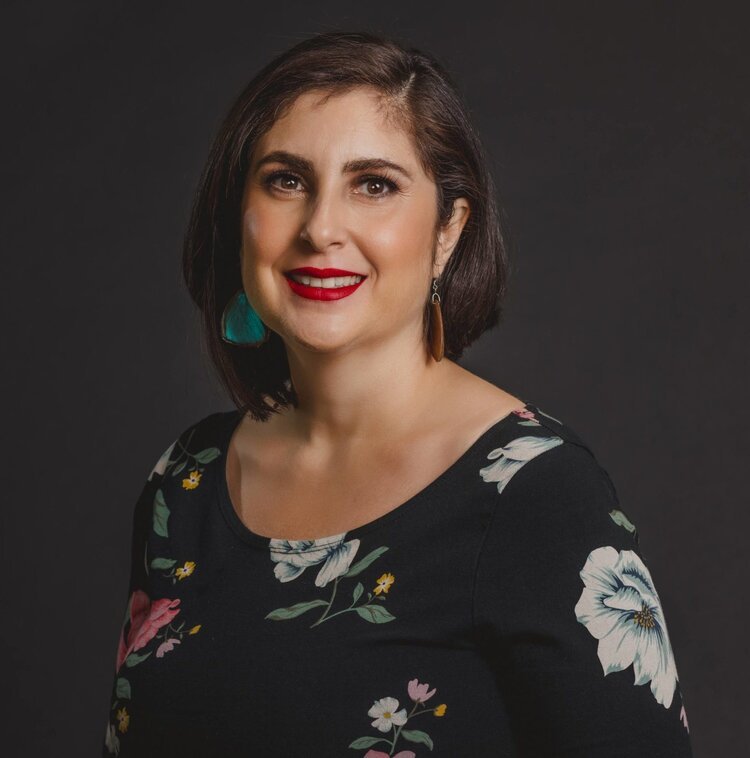“Journalism is a way to answer the questions I had as a child”
Zaydee Sánchez with her camera in Grapevine, California. Sánchez, who grew up in the Central Valley, focuses on underrepresented communities — from immigrants facing deportation to rural areas impacted by pesticide exposure. Photo by Kat Contreras
Photojournalist and long-time palabra contributor Zaydee Sánchez, winner of the 2025 American Mosaic Journalism Prize — for coverage of misrepresented peoples — discusses covering wildfires, journalism and community.
Editor’s note: The palabra team congratulates contributor Zaydee Sánchez for winning the American Mosaic Journalism Prize, which celebrates the vital work of freelancers. This award, the only one of its kind, is decided through anonymous nominations from journalism leaders across the country and includes a cash prize of $100,000.
Freelancers, in particular journalists of color, are the backbone of journalism, and they often perform dangerous and demanding jobs without health insurance, retirement savings or fair compensation.
By recognizing Sánchez and her work, the award brings attention to her ample body of stories focusing on underrepresented communities, from immigrants facing deportation to rural communities impacted by pesticide exposure.
Sánchez was recognized by a panel of 10 judges for “her poignant coverage of farm workers, migrants and transgender Latinx groups” in 2024. That includes a story that she wrote and photographed for Mother Jones, on Pajaro, a small-farm working-town struggling to rebuild after a devastating flood.
“Zaydee embodies the best of independent journalism. In the five years I've worked with her, I've seen her become an authoritative voice on social justice and immigration in an array of media and on multiple platforms,” said Ricardo Sandoval-Palos, palabra’s founding managing editor. “A growing number of major news organizations now consider her work essential. They're seeing what I saw years ago: a journalism talent with a keen eye for seeing the real people behind headlines and telling their stories in words and dramatic still and filmed images. Zaydee has no fear as a journalist and directs her intrepid spirit to identify and dig out stories in areas often overlooked by mainstream media. Rewarding her work sends a powerful message that independent journalism is vital to a robust media landscape,” added Sandoval-Palos.
We also applaud Latria Graham, who also won a Mosaic prize this year for her powerful storytelling. As a fifth-generation farmer from Spartanburg, South Carolina, Graham brings a deeply personal and insightful lens to her reporting on race, Southern culture and the experiences of underrepresented communities.
Valeria Fernández, palabra’s managing editor, recipient of the inaugural American Mosaic Journalism Prize in 2018.
Haz clic aquí para leer este reportaje en español.
Once the Los Angeles fires were almost contained, approximately three weeks after they had burned through a significant portion of the city, I met with Zaydee Sánchez, a photojournalist that nurtures her lens with community and infuses her written words with immense care, precision and humanity. A generous journalist to her colleagues, she seems not to let go of the camera, even while sleeping. Attentive all the time. Talkative. She code switches from English to Spanish without realizing it.
We had met in Los Angeles a couple of months before, during an NAHJ convention panel where we talked about our experiences working with palabra — the publication where she started her career as a photojournalist, and where I began my new life as a freelancer in the United States a year after arriving from Cuba.
“What was it like to cover the fires?” I asked.
“Oh, the fires,” she replied “It’s the most challenging thing I’ve had to cover.”
She said this even as she was preparing to cover a story on the border with Tijuana. Even though she has narrated suffering from the heart of suffering.
She explained that, from the moment the first fire alarm went off, she worked non-stop for Reuters for four days, as many as 14 hours a day. She received calls from news outlets all over the world. The city was chaos, hell, the sky orange. The fire spread was such that Zaydee was unsure if the fire would reach her house, which is nine miles from Altadena. But there she was, in Altadena, one of the areas where the fires did most damage, with a camera, boots and a mask.
Residents work together to put out the flames engulfing homes in their neighborhood as wildfires moved through Altadena, California, U.S. January 8, 2025. These photos are part of the fire coverage for Reuters. Photo by Zaydee Sánchez for Reuters
Bassam Marjiya stands with his father and friends, searching for important documents amidst the remains of their law firm, which was destroyed by the wildfires in Altadena, California, U.S. January 9, 2025. Photo by Zaydee Sánchez for Reuters
“The most challenging thing for me was taking photographs of people seeing their destroyed houses. Because you are walking and you see the house burning, you can’t see the sun, there is a lot of smoke, the mountain is on fire, and people are crying, crying like children,” she said.
In that situation, how will you ask someone to let you take a photo? You have to plug it in a matter of milliseconds.
Zaydee’s strategy: a glance. “If people close their faces to me, it means ‘Please don’t take a picture of me’. But if I see you, I raise the camera, and the most you give me is a look like that (she stares at me); I know you will allow me to take a picture.”
Carolina Ramirez-Sanchez stands in the rubble of her home of 21 years in Altadena. Sanchez had numerous fruit trees on her property, including a tangerine tree in the front yard where Sanchez and her siblings would pick fruit, a memory now lost to the flames. These photos are from the story “‘I just really want my home back’,” published in The 19th, about women reflecting on the toll of the Eaton Fire and the destruction it brought to their community of Altadena, a multicultural haven for generations. Photo by Zaydee Sánchez for The 19th
Anniah Baynes, an 18-year-old high school senior, lost her childhood home in the Eaton Canyon Fire in Altadena, California. Photo by Zaydee Sánchez for The 19th
***
Zaydee grew up in Tulare, a rural town four hours north of Los Angeles. She is the daughter of Mexican immigrants and has two brothers and a sister. Her memories include living in a motel for a month when she was 7 years old while her parents found jobs. The motel had a pool, which gave her the illusion that she and her family were millionaires.
“What is it like to be the daughter of immigrants?” I asked.
“Confusing.”
On the one hand, because of language: English at school, Spanish at home. On the other hand, because, culturally, you don’t know where you belong. And finally, she said, because you grow up in fear.
“Once, immigration (authorities) stopped my father. That was something we were always afraid of. But as a child, you don’t know what immigration is or what ICE (U.S. Immigration and Customs Enforcement) is. You know that someone is not fond of you and you must be careful who you open the door to... In any case, they are fine with you, but not your parents. But simultaneously, you think they don’t care for you because they don’t care for your parents.”
They left the motel when her father found work in the fields. Her mother started cleaning houses and then made a living as a caregiver for older people. Zaydee took care of her siblings and their new apartment.
High beam lights illuminate farm workers on the fields as they pick throughout the night in Greenfield, California, November 10, 2023. Photo was taken for “They Believe Pesticides Caused Their Cancers. Proving It Is Almost Impossible,” a story published in The Wall Street Journal about farmworkers in California’s Salinas Valley working in fields with pesticides tied to illnesses, including some cancers. Photo by Zaydee Sánchez for The Wall Street Journal
Zaydee Sánchez reporting in Greenfield, California. Photo courtesy of Zaydee Sánchez
She heard stories: of a neighbor who was deported, of a raid at a factory, of someone who died in a car accident fleeing from ICE.
Don’t open the door to anyone.
“We just knew that those were the rules.”
She remembered that someone always crashed into a tree in those car accidents.
Don’t open the door to anyone.
She listened in silence. She pocketed her questions.
“Journalism is like a way of answering all the questions I had as a child, right? About why things are the way they are.”
***
“What culture do you identify with?” I asked her.
“Well, when I’m in the United States, I feel Mexican, and when I’m in Mexico, I feel American.”
“And what if you’re in Europe, for example?”
“I feel American. I think I feel more Mexican here because there’s so much racism, right? In Mexico, everyone is Mexican, but here you’re African American, Mexican American... You can’t just be American, do you feel me?”
Frida Fierros left Guadalajara, Mexico, in March 2023 with just $40 U.S. dollars, fleeing from violence and domestic abuse as a trans woman. She sought safety in Los Angeles, a hub for trans Latinos and immigrants, hoping for a new beginning. This photo was taken for “California’s transgender Latinx people find refuge and empowerment in community,” a story published at High Country News. Photo by Zaydee Sánchez for High Country News
“Much of my resilience comes from my faith,” says Frida Fierros as she puts her hand on an image of the Virgen de Guadalupe. Photo by Zaydee Sánchez for High Country News
***
Altadena is full of inmigrants. You can speak Spanish with practically anyone you meet. For Zaydee, a freelancer since 2018, being bilingual has served as a master key. The measured and delicate way she observes the world has also served her well. When she arrives on a scene, the first thing she does is look for the light and see where to position herself, tips that she has learned through practice. In Altadena, among the hubbub of firefighters and neighbours trying to save their lives and belongings, while the fire devoured the mountains and the streets, Zaydee knew fear again. She worried for her friends, for people she knew, for the city.
“But I am a journalist with Reuters, right? I’m working with a team where they say, ‘You go here, you go there, you go here,’ and we are working safely. You have to check in, share your location and talk with the editor. You have to work faster to deliver the photos because they’re going to the internet where the big media outlets like the Wall Street Journal or the New York Times take the pictures from the wire, right?”
So she was running from the gas station to the hospital, to the animal shelter, to a house, to another neighborhood... She chose photos from the car and delivered them to Reuters without a break.
“It was challenging for me because we are human beings, and you feel that pain, right? You feel that pain…”
Support the voices of independent journalists.
|
She told me she started to feel numb, like a robot. So on the fifth day, she decided to rest.
“But then I kept doing it. As a journalist, you feel you must be there, right?”
“When did you stop?”
“I haven’t stopped.”
We said goodbye quickly. She was headed to Tijuana. When she returns to Los Angeles, without having taken a break, she will continue to narrate the rebuilding: her own, which she works through journalism, and the one of the city.
Aragon Elementary School students hug their teacher, Diane López. Photo from the story “The Catch Up,” about the Los Angeles Unified School District’s push for tutoring to aid post-pandemic recovery, despite slow progress in many schools. Photo by Zaydee Sánchez for palabra
Early in the morning, Silvia Garcia develops a rhythm to quickly and most efficiently pick each grape branch before temperatures reach the high 90’s. Photo from the story “Unheard, Overlooked and Exposed,” highlighting the struggles of farmworkers to receive healthcare services during the COVID pandemic. Photo by Zaydee Sánchez for palabra
Jade Green and her mom, Claudette Hubbard, in Claudette’s home in Los Angeles. Photo taken for “Disrupting the School-to-Prison Pipeline,” a story part of the “Safe to Learn” ongoing investigative series, that explored how communities define safety for their children and what those children need in order to develop their full potential in and out of the classroom. Photo by Zaydee Sánchez for palabra
Sandy Avila in front of the Villa Parke Mural. She recalls growing up in the neighborhood. "We have to remember where we are from," she says. "We have to remember where it all started." Photo from the story “Las Lowriders,” about women changing the lowrider scene in Los Angeles. Photo by Zaydee Sánchez for palabra
—
Jesús Jank Curbelo is a Cuban journalist. He has written articles in English and Spanish for outlets in the United States, Argentina, and Peru, among other countries. He is the author of the novel “Los Perros” (2017). @jankcurbelo
Valeria Fernández is the managing editor of palabra. @valfernandez





















